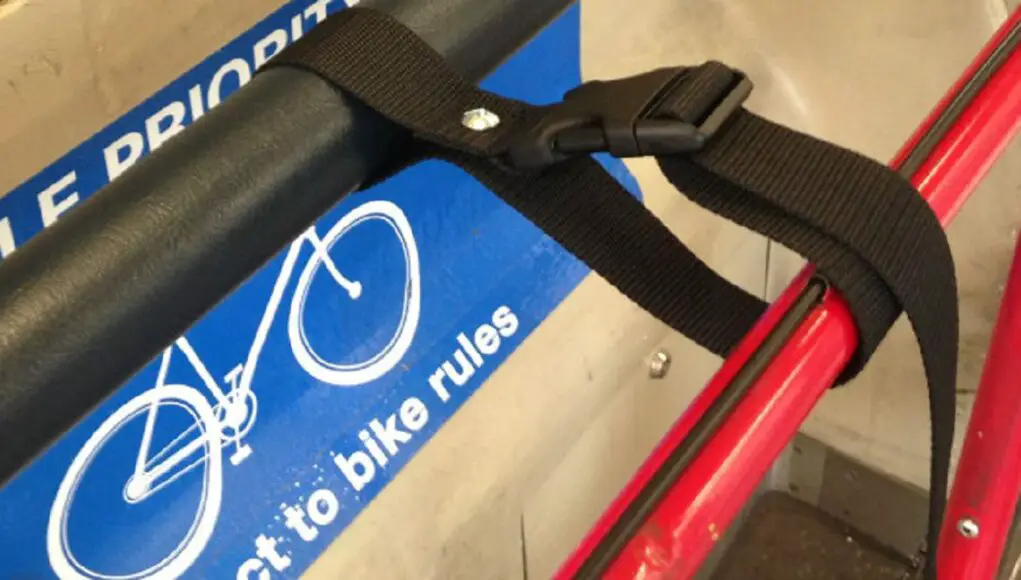Engineers take note, this is a great example of KISS engineering
A BART RT caught my eye earlier today showcasing one of BART’s often overlooked solutions to an age-old problem, how to keep your bike safe and secure as a train commuter.
BART informed its followers there’s more to this strap than meets the eye, a large part thanks to a UC-Berkeley student’s key inputs.
Here’s the tweet below.
Commuting on BART is a major convenience for commuters within walking or driving distance of a station. Despite that, trains can only get you so far.
Since BART carried its first passenger in 1972, bicycles continue to be a key final-mile solution to get commuters where they need to go after exiting the station.
Bikes are great as transportation but are cumbersome keeping upright and secure in a jostling and moving BART train.
Bike commuters on BART (and most commuter trains) suffer from Lean Rail Frustration or having to look after your bike while seated. If your BART train is even partially filled, the chances of you comfortably sitting become next to nil.
Bike commuters often spent their commutes standing by their bike, making sure they didn’t tip over or worse, stolen at the next stop.
In 2016, BART finally came up with a solution.
BART Bike Program Manager Steve Beroldo recruited the efforts of Civil Engineering Student Jaelen Loche.
Together, Beroldo and Loche prototyped some bike straps, tested them out, and installed them on trains.
There was a velcro and buckle design. Ultimately, it looks like riders preferred the buckle design.
With Beroldo and Loche’s newly installed straps, Bike Lean frustration is largely a thing of the past.
KISS engineering
Three things make this bike strap an example of good ol’ Keep It Simple, S****d engineering.
exhibit b pic.twitter.com/75pPoqdCFF
— Manish (@ManishEarth) July 25, 2021
First, it’s a honestly just a strap. I’m sure there are other elegant solutions to LRF but straps are a no-brainer.
Built from a robust material, they’re durable for years of use, are easily movable on the pole it’s installed, and can expand to accommodate multiple bikes.
Then there’s the simple black buckle. These are the prototypical buckle, ubiquitous on most straps we needed securing in our lifetime. Grade school backpacks, fanny-packs, and messenger bags all use this buckle type. They are easy to use and give the user feedback with a satisfying click so you know it’s secure.
Finally, there’s the overall cost-effective design. BART installed 120 straps. Presumably, each buckle cost little per unit, an easy sell to BART management.
If buckles break (and they will) the buckles look replaceable at the point of failure.
I feel like if you’re looking for inspiration for a solution to a problem, the bike strap is something everyone should keep in the back of their minds to reference.



